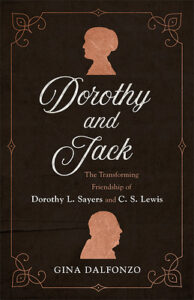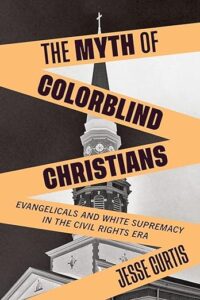I am a diehard ebook fan. And I have stuck mainly to Kindles because that is where my ebooks are located, and there is a lock into a platform once you have thousands of books on that platform. I purchased the very first Kindle in 2007. And then I upgraded in 2009. And I upgraded again and again, owning, or at least using, almost every kindle model that has been released. But over the past few years, I have stuck with older kindles because there have not been compelling reasons to upgrade.
Previous Models and Context
 In 2015, the Kindle Oasis came out. In addition to the very lightweight and the new offset design, the Oasis was the first kindle that returned to the page turn buttons after the release of the Kindle Keyboard in 2010. I like page turn buttons. When you do not have a page turn button, you have to move your finger to the screen and get fingerprints on it. Pressing a screen is less precise than a button, especially when you backward pages. In 2018, I purchased a Kindle Oasis 2 when there was a sale because the Kindle Oasis 3 had just been released. The Kindle Oasis 2 kept the offset design, the page turn buttons but increased the screen size (and weight) and was now waterproof. I had been looking for a waterproof kindle since 2010 when I had a floating waterproof case for my Kindle, and I loved it. The problem with Amazon’s waterproof Kindles design is that water, especially seawater, can change the page. On the Kindle Oasis, you can turn off the touch screen and only change pages with the buttons, but that is not an option for the waterproof Paperwhites.
In 2015, the Kindle Oasis came out. In addition to the very lightweight and the new offset design, the Oasis was the first kindle that returned to the page turn buttons after the release of the Kindle Keyboard in 2010. I like page turn buttons. When you do not have a page turn button, you have to move your finger to the screen and get fingerprints on it. Pressing a screen is less precise than a button, especially when you backward pages. In 2018, I purchased a Kindle Oasis 2 when there was a sale because the Kindle Oasis 3 had just been released. The Kindle Oasis 2 kept the offset design, the page turn buttons but increased the screen size (and weight) and was now waterproof. I had been looking for a waterproof kindle since 2010 when I had a floating waterproof case for my Kindle, and I loved it. The problem with Amazon’s waterproof Kindles design is that water, especially seawater, can change the page. On the Kindle Oasis, you can turn off the touch screen and only change pages with the buttons, but that is not an option for the waterproof Paperwhites.
 The other problem with waterproof kindles is that they are not floating, unlike my waterproof case. One of my favorite things to do is float in the ocean (or a pool) and read. But if you are floating in the ocean and a wave breaks over you, not only will that wave likely turn your page, it may knock the kindle right out of your hand. I tried all sorts of hacks to make my kindle float. The most effective was to get foam tape and cover the back of the Kindle Oasis in foam tape, which gave it enough buoyancy to keep it at or near the surface. But I always thought the Kindle Oasis 2 was too heavy and the edges too sharp, and I never got used to it. When my mother-in-law needed a new kindle, I gave her my Oasis 2 and went back to my Oasis 1. The Oasis 1 is feather-light and small enough to fit into many of my pockets. But six years later, the battery is shot, and I need to recharge it every day or two.
The other problem with waterproof kindles is that they are not floating, unlike my waterproof case. One of my favorite things to do is float in the ocean (or a pool) and read. But if you are floating in the ocean and a wave breaks over you, not only will that wave likely turn your page, it may knock the kindle right out of your hand. I tried all sorts of hacks to make my kindle float. The most effective was to get foam tape and cover the back of the Kindle Oasis in foam tape, which gave it enough buoyancy to keep it at or near the surface. But I always thought the Kindle Oasis 2 was too heavy and the edges too sharp, and I never got used to it. When my mother-in-law needed a new kindle, I gave her my Oasis 2 and went back to my Oasis 1. The Oasis 1 is feather-light and small enough to fit into many of my pockets. But six years later, the battery is shot, and I need to recharge it every day or two.
If you have an old kindle, you can trade in the kindle to Amazon, and they will refurbish or dispose of it properly and give you a minimum of a $5 credit and 20% off of a new kindle. I tend to collect broken kindles and then send them in when people I know need a new kindle to get the discount. But those trade-in credits only last for so long, and I had one that was about to expire. So I picked up the new Kindle Paperwhite (2021), Kids’ Edition when it was on sale before Thanksgiving. I have used it for nearly a month, and my longer-term impressions are nearly the same as my short-term impressions.
Size and Weight
The new Kindle Paperwhite has a 6.8-inch screen, and that 0.8 inches may not seem like a lot, but based on the additional width and height, at the font size I mostly use, there are about five extra lines per screen. The Paperwhite is heavier than I think it should be, 205 to 208 grams depending on the model. That is up from 182 to 191 grams for the 2018 Paperwhite and 194 grams for the 2019 Oasis. Those are all significantly heavier than the 131 grams of the 2015 Kindle Oasis without the battery case. But the Kindle Paperwhite has comfortably rounded edges, which means that weight, even while noticeable, does not hurt to hold. That being said, I do find myself reading in a recliner, resting the kindle on my stomach or the arm’s chair.


 Summary: An overview of the tension between the church’s good and bad behavior throughout church history.
Summary: An overview of the tension between the church’s good and bad behavior throughout church history. 



